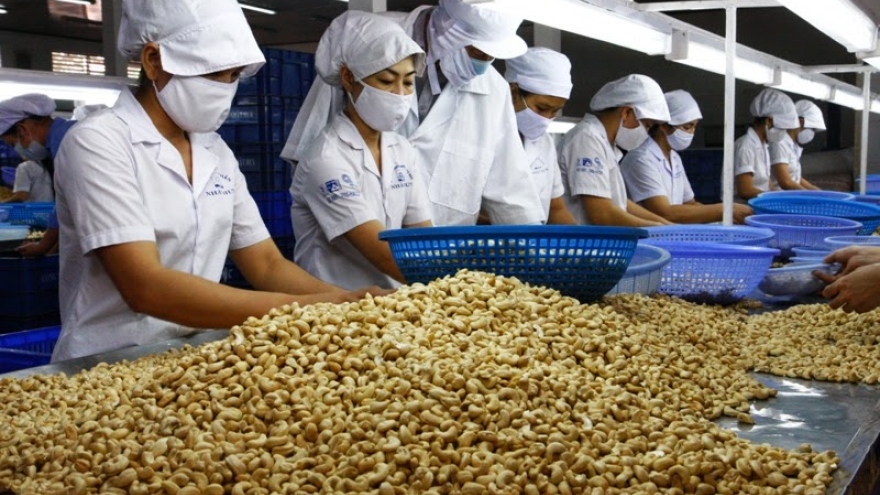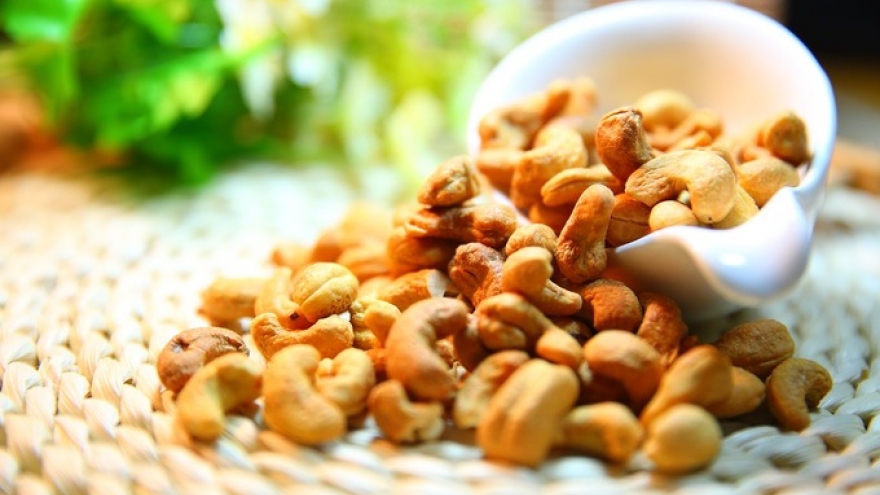Binh Phuoc warns farmers over uncertified cashew
The Department of Agriculture and Rural Development of Binh Phuoc province has warned local farmers not to grow new cashew varieties that have not been certified by the Ministry of Agriculture and Rural Development to ensure cashew quality is not affected.
 |
|
Farmers in Binh Phuoc province fertilise cashew trees. (Source: VNA)
|
They are planting varieties like AB29 and AB05-08 that have not been certified, saying they produce large nuts and more fruits than existing varieties when they begin to fruit after one year.
The seedlings of the two varieties are in great demand now.
But the department said the two varieties cannot match traditional ones for quality or flavour.
Le Thi Anh Tuyet, Deputy Director of the department, said the department is monitoring the growth and disease situation of the two varieties grown on a trial basis by the Institute of Agriculture Science for Southern Vietnam’s cashew research and development centre.
It is also evaluating their quality for flavour and fat, she said.
It has petitioned the ministry to instruct relevant authorities announce the research results soon, she said.
The department encourages farmers to replace old cashew trees with certified varieties like PN1, MH54, DP41, and PN18, which are suitable for the province’s soil conditions.
The south-eastern province needs to replant about 2,486ha this year, according to the department.
Ethnic minority, poor, and near-poor farmers and those covered by the Government preferential policies, who are replacing their old cashew trees, are provided with subsidies for seedlings.
Bu Dang and Bu Gia Map districts lead the province in the number of old cashew trees that need to be replanted this year -- 241,000 and 197,190.
Cashew farmers have suffered from poor harvests in recent years because the weather has been inclement and their trees are too old.
Duong Van Phong, who has a 4ha orchard in Bu Gia Map district, said he suffered a loss of about VND15 million (US$660) this year after having a poor harvest.
Disease outbreaks had caused yields to decline for the last three years, he added.
The province plans to replant 25,000ha of cashew trees and plant more than 41,000ha anew under the intensive farming model by 2020.
The cost of replanting is around VND20 million (US$880) per hectare while new trees cost VND10 million (US$440) per hectare, according to the department.
Cashew is the province’s key industrial crop and has helped people in ethnic communities and rural, mountainous and border areas to escape poverty.
Binh Phuoc’s cashew has been given geographical indication (GI) certification by the National Office of Intellectual Property.
The province has 134,170ha under cashew, or nearly 50 percent of the country’s total area under the nut, and produces 150,000 tonnes a year.


